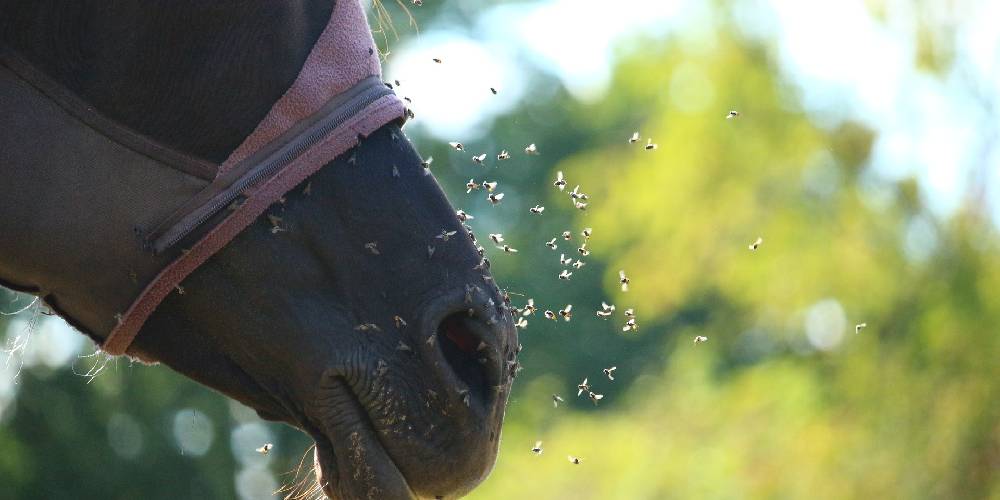“What are those things you put on horses’ heads in summer?” “Can they see through them?” I get asked these questions all the time. That thing is called a fly mask and it is a necessity when the weather starts to warm up. Flies are a huge issue that horses need to put up with in the spring and summer months and the mask they wear is a big problem solver.
So… What is a Fly Mask?
To get straight to the point, fly masks are typically a piece of mesh sewn in the general shape of a horse’s upper head. The mesh is to ensure that the horse has protection from pesky flies irritating the eyes, but still allows the horse to see and function normally. Typically, the mask is fastened under the horse’s jaw or cheek with Velcro to keep it in place.
Types of Fly Masks
Standard Fly Mask
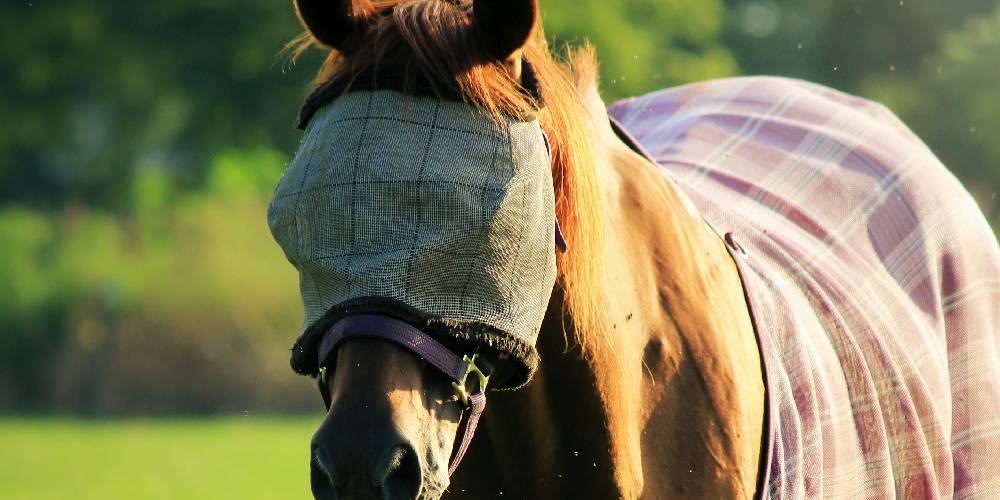
The standard fly mask seen used by most horses out there is a piece of mesh sewn in the shape of the horse’s upper head. There is a spot on the top of the mask where the ears can go through, and some even have a place where the forelock can pull through as well. On the standard fly mask, the nose is left uncovered and the ears are left uncovered as well.
On most fly masks I’ve seen, Velcro fastens the mask in place on the horse’s head under their jaw/cheek. To keep the horse comfortable, there is a border along the outside of the mask to ensure there is no poking or rubbing.
Fly Mask With Ears
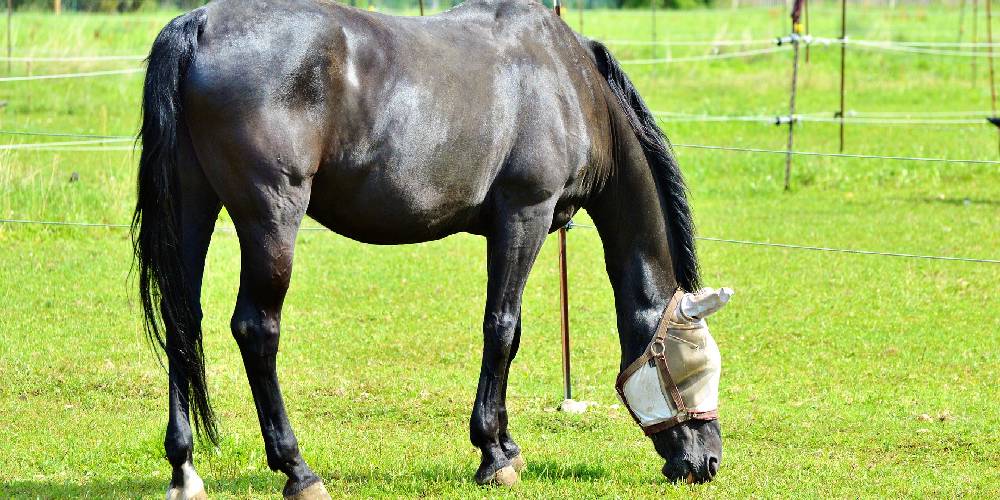
This type of fly mask is nearly the same as the standard mask, only it offers extra protection. Fly masks with ears are used to not only protect the horse’s eyes from flies, but also their ears. Typically, this fly mask fastens under the jaw/cheek of the horse with Velcro.
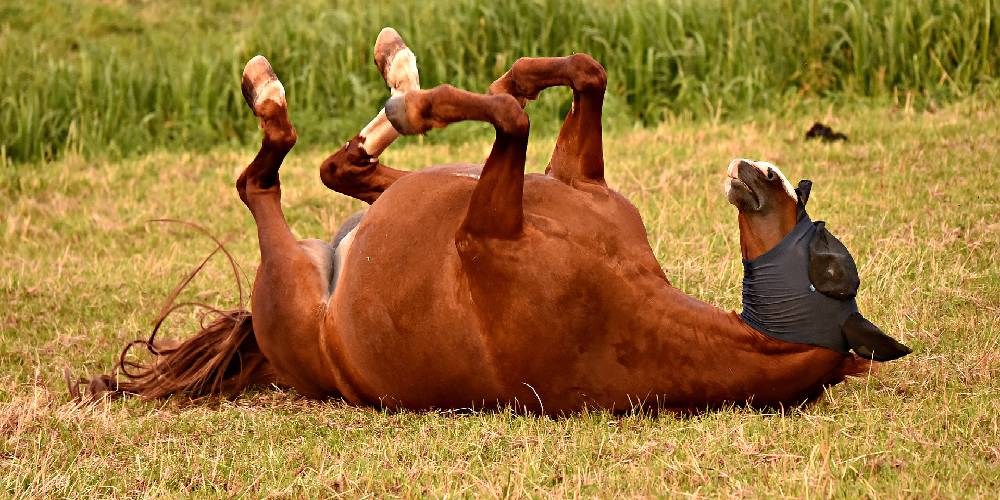
Some stores will sell masks like this only made mostly of Lycra with no Velcro involved at all. There are mesh-covered ears and eyes but the rest of the mask fits snugly on the horse’s face. This type of mask was a great option for my sister’s Arabian Crossfiire. He would find a way out of every mask except for this one.
Another reason I liked this style of mask over most is that the mask is made of a softer material which is great for use on sensitive or head-shy horses. The mesh pieces on the eyes stick out of the side of the face so their eyes aren’t getting poked or rubbed by the mask at all.
Fly Mask With Ear and Nose Cover
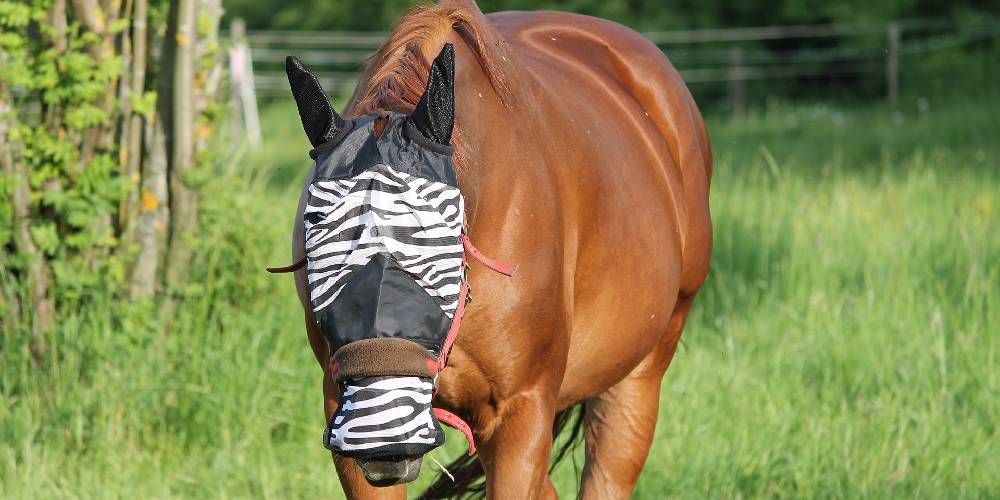
This mask offers almost full-face coverage which makes it a great option for sensitive horses. The eyes, ears, and nose are all covered. The mask fastens along the bottom at the jaw/cheek area with Velcro. This mask often comes with a place to pull the forelock through. I personally like this mask a lot because of the extra protection.
Fly Bonnets

Even though this isn’t a fly mask, I wanted to bring up the topic of fly or ear bonnets as they could definitely be a protection option for sensitive horses.
Fly bonnets (sometimes known as ear bonnets) are a piece of potential fly protection used by many horses. A fly bonnet is typically a crochet-like base with fabric ear covers.
Often this is seen being used by horses participating in show jumping, eventing, and hacking. The main reason for using a bonnet in these sports (other than making your horse look fancy) is because some horses have sensitive ears and they can become irritated by the wind and rushing air from moving so fast. Using a bonnet helps to protect the ears and muffle the sounds of the wind.
Some horses don’t like the feeling of their forelock or mane getting in their ears so protection from that irritant is also another use for it. This is a great accessory for keeping flies and dirt out of a horse’s ears as well.
The Pros and Cons of Using Fly Masks
The Pros
- Fly masks keep flies from irritating the horse’s eyes and sometimes their ears and nose as well
- Fly masks are an affordable and easy-to-find tool
- Most are adjustable and can come in many sizes
- Typically the horse can see clearly through the mask
- There are fun colors out there as well!!
- This is a great option for horses with fly or fly spray allergies as they won’t react to a mask
- fly masks can offer some protection from the sun
- Fly masks and bonnets with ears offer protection from the wind, dirt, flies, and other things that may irritate the horse’s ears
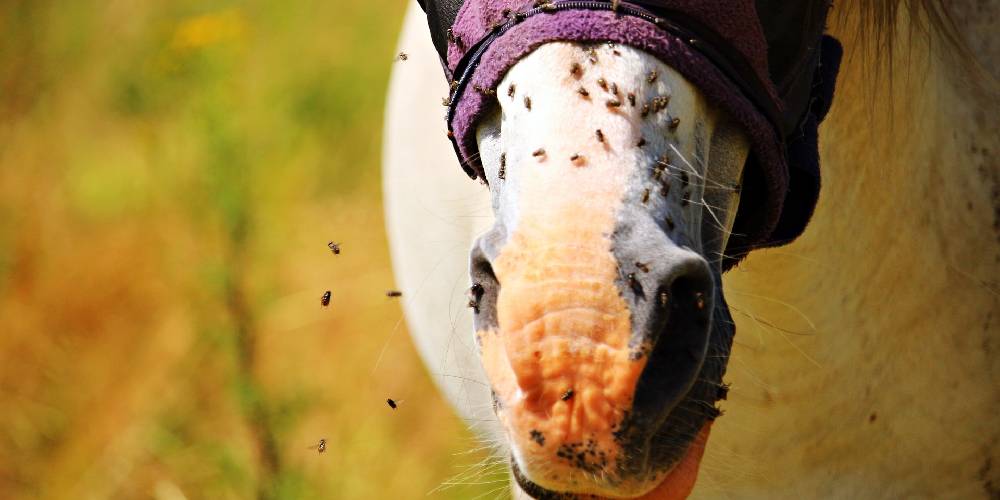
The Cons
- If the mask isn’t taken off enough, horses can have hair rub away from constant contact and rubbing
- Fly masks aren’t typically durable so if you have a horse like Crossfiire then you may find a torn fly mask out in the turnout
- Head shy horses may be difficult to use a fly mask on
- Using a dirty mask can cause irritation
Things to Pair with Fly Masks for Ultimate Fly Protection
Fly-Sheets
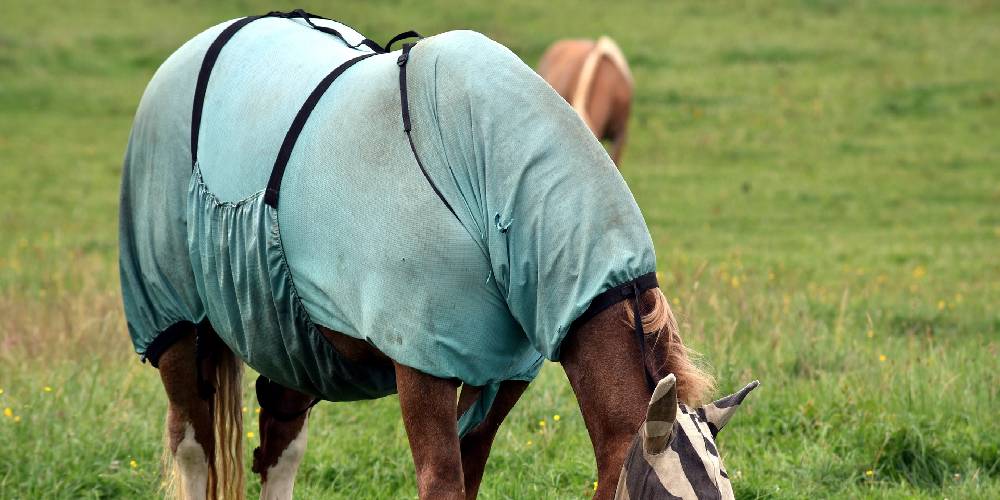
A fly-sheet is essentially a thin, meshy, blanket-like cover that many people use on horses. A few main reasons a fly-sheet may be necessary for your horse is if:
- Your horse has a fly allergy
- Your horse is allergic to fly spray
- Your horse has a healing wound that needs protection from flies and other bugs
Fly Spray
This spray is a life saver when it comes to fly control. Fly spray can be bought in an aeresol can or in a spray bottle.
Spraying your horse over with a mist of fly spray can keep flies away for hours! (Even though this is a fly repellant, it may still be necessary to keep a fly masl on the horse’s face as it doesn’t always keep all the flies away)
FAQ’s About Fly Masks
Can the horse see through the mask?
Yes, the horse can in fact see through their fly masks. Even though it may be difficult or even impossible to see through them from the outside, they can see just fine from the inside. If the horse couldn’t see, people wouldn’t put it on them as it would be a hazard for both people and horses.
When do I need to use a fly mask on my horse?
During the spring and summer months, flies are everywhere. Horses should be wearing the masks during the days of the warm months for extra fly protection. Because the flies aren’t out so much at night, the horse will do fine without it after sunset. In winter and fall the flies seem to disappear so at that time your horse might not need a mask at all.
How much do fly masks typically cost?
Fly masks can cost from $10 to $35 depending on the material used, the brand name, the size of the mask, and how much of the horse’s face will be protected.
Can you ride a horse with a fly mask on?
Yes, you can ride a horse with a fly mask on. There are even masks that are meant for riding with. Make sure that the horse can see well out of the mask and that the mask doesn’t interfere with the bit or reins, but otherwise you should be good to go!

